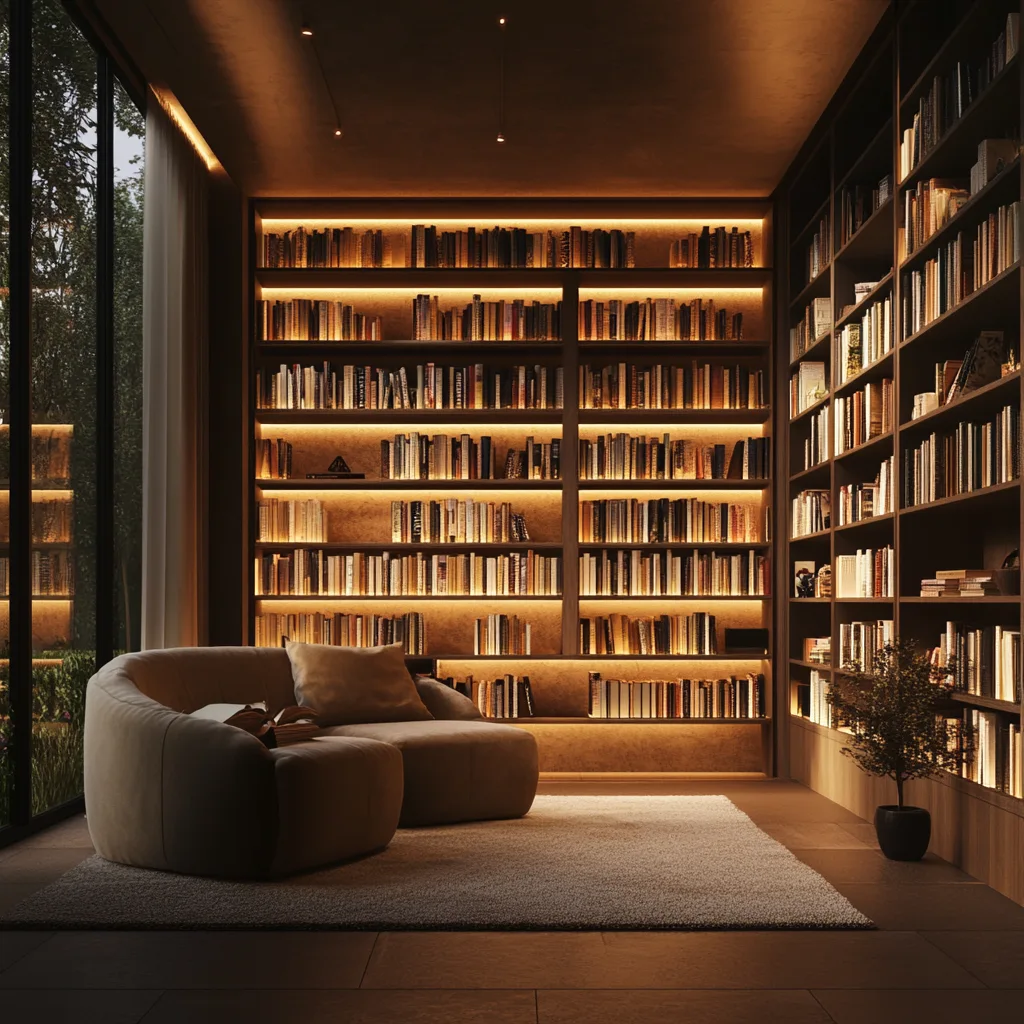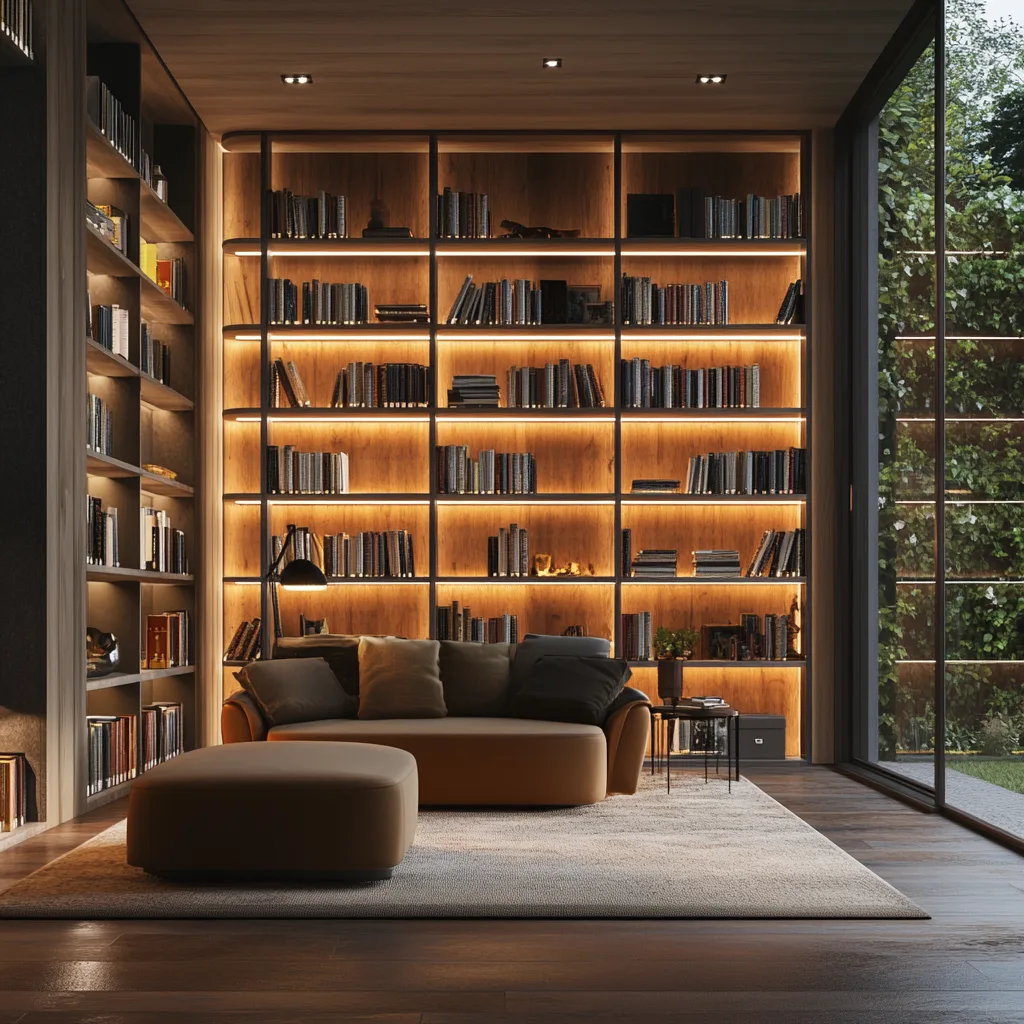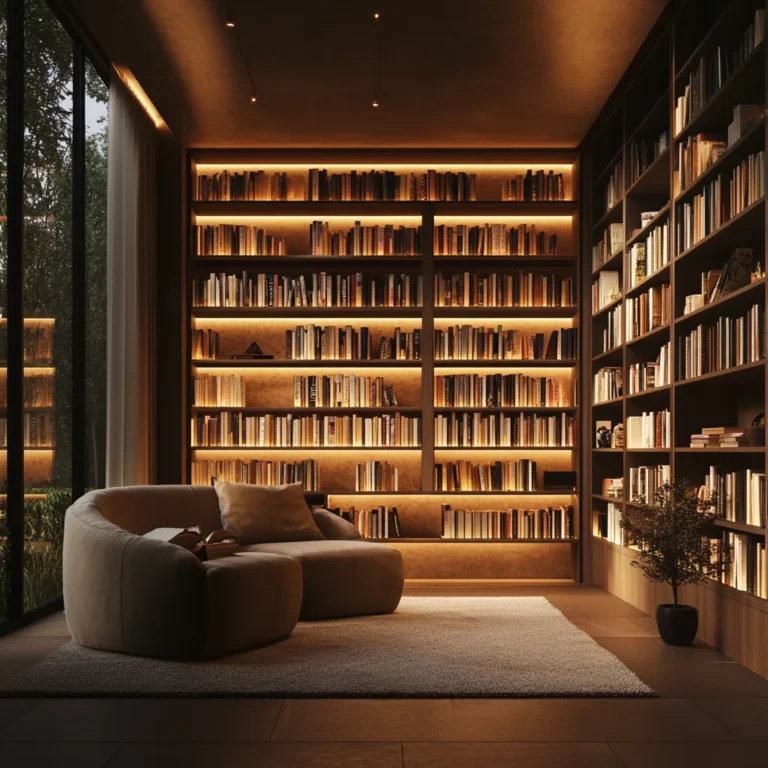Traditional home library is more than just a room filled with books—it’s a sanctuary where timeless elegance meets intellectual curiosity. In this in-depth guide, we explore 14 captivating ideas for a traditional home library that not only celebrates classic design but also creates a warm, inviting space for reading and reflection. Whether you’re a bibliophile or simply love the charm of vintage decor, this article will inspire you to create a home library that stands the test of time.
Table of Contents
The Allure of a Traditional Home Library
A traditional home library evokes a sense of nostalgia, elegance, and refined taste. This design style embraces classic elements such as rich wood tones, intricate moldings, and elegant furniture, creating a space that is both functional and luxurious. The appeal lies in its ability to combine the comfort of home with the intellectual ambiance of a curated collection of books.
A traditional home library is ideal for anyone who appreciates the artistry of classic design and wants a dedicated space that stimulates the mind and soul.
Embracing Classic Elements
Creating a traditional home library starts with embracing classic elements that set the tone for the room. Consider the following components:
- Rich Wood Paneling: Use dark woods like mahogany, oak, or walnut for bookshelves and accent walls to add warmth and depth.
- Elegant Moldings and Trim: Crown moldings and baseboards with intricate details enhance the room’s sophisticated look.
- Antique Furniture: Choose vintage or reproduction pieces such as leather armchairs, ornate desks, and classic reading tables that evoke an old-world charm.
Incorporating these elements helps form a cohesive aesthetic that honors the heritage of traditional design.

Designing Your Traditional Home Library
Designing a traditional home library requires a balance between aesthetics and functionality. Start by selecting a dedicated room or a quiet corner where you can create a focused environment. Consider the following steps:
- Space Planning: Evaluate the available space and plan the layout to accommodate bookshelves, seating areas, and a work desk.
- Color Palette: Opt for warm, earthy tones such as deep burgundy, forest green, and navy blue. These colors complement rich wood finishes and create a cozy atmosphere.
- Lighting: Layer your lighting with a mix of natural light, table lamps, and wall sconces. Consider using a statement chandelier to serve as a focal point.
- Flooring: Choose classic materials like hardwood or patterned rugs that add texture and enhance the overall design.
For further inspiration, check out our internal guide on Classic Library Design Tips to learn more about transforming your space.
Furniture and Decor Choices
Furniture plays a crucial role in defining the character of your traditional home library. Here are some ideas to consider:
- Bookshelves: Invest in custom or pre-made bookshelves that maximize storage while adding a decorative element.
- Seating: A mix of comfortable reading chairs, wingback chairs, and a classic sofa can create inviting seating areas.
- Accents and Accessories: Look for antique globes, vintage clocks, and ornate picture frames to embellish the space. Displaying heirlooms or treasured items adds a personal touch.
- Area Rugs: Choose richly patterned or solid-colored rugs to ground the space and add warmth.
Thoughtfully selected furniture and decor can transform a simple room into a luxurious retreat that truly reflects the essence of a traditional home library.
Incorporating Art and Personal Touches
A traditional home library should be a reflection of your personal taste. Incorporate artwork, personal collections, and heirlooms that speak to your interests. Consider these suggestions:
- Artwork: Hang framed vintage prints, classic portraits, or landscape paintings that complement your library’s color scheme.
- Personal Collections: Showcase rare books, first editions, or antique maps in glass cabinets to add both visual appeal and historical value.
- Memorabilia: Display family photos or collectible items in curated arrangements on side tables or mantels.
These personal touches not only make the space uniquely yours but also create an environment that inspires learning and reflection.
Lighting: Setting the Mood
Lighting is key in a traditional home library. It not only illuminates the space but also sets the mood and enhances the ambiance. Consider using a layered lighting approach:
- Ambient Lighting: Use a combination of chandeliers and ceiling fixtures for overall illumination.
- Task Lighting: Table lamps and reading lights placed near seating areas ensure comfort during reading sessions.
- Accent Lighting: Wall sconces and LED strips can highlight architectural details and art pieces.
For an immersive tutorial on lighting techniques, check out this YouTube video that offers practical tips for enhancing your home library’s lighting.
Blending Traditional and Modern Elements
While the focus is on a traditional home library, adding subtle modern touches can create a balanced design. Consider integrating:
- Modern Technology: Discreetly install a sound system or smart lighting controls that don’t disrupt the traditional aesthetic.
- Contemporary Art: Mix classic furniture with a few pieces of modern art to create visual contrast.
- Innovative Storage Solutions: Use hidden storage compartments or modern shelving systems that maintain the room’s clean lines while providing functionality.
Blending the old with the new ensures that your traditional home library remains both timeless and adaptable to modern living.
Creating a Cozy Reading Nook
Every traditional home library should have a dedicated reading nook. This space serves as a personal retreat for relaxation and reflection. To create the perfect nook:
- Comfortable Seating: Invest in a plush armchair or chaise lounge that invites you to curl up with a good book.
- Side Tables: Place small tables or vintage trunks nearby to hold a cup of tea or reading glasses.
- Soft Textiles: Add cozy blankets and decorative pillows that complement the room’s color palette.
A well-designed reading nook enhances the overall functionality of your library, making it a true haven for book lovers.
Organizing Your Collection
A key aspect of a traditional home library is an organized and curated collection of books. Consider these organization tips:
- Categorization: Group books by genre, author, or color to create an aesthetically pleasing arrangement.
- Display Options: Use open shelves for frequently used books and closed cabinets for rare collections.
- Labels and Signage: Incorporate vintage-style labels or custom signage to add a touch of nostalgia and order.
An organized library not only looks attractive but also makes it easier to find your favorite titles.
External Inspiration and Resources
For additional ideas and expert advice on creating a traditional home library, explore resources from reputable design websites. A great starting point is House Beautiful which offers a wealth of inspiration and practical tips for home libraries. Their insights can help you refine your vision and execute your project with confidence.
Enhancing with Accessories
Accessories can bring your traditional home library to life. Think about integrating:
- Vintage Clocks: An antique clock can serve as both a functional piece and a decorative accent.
- Decorative Mirrors: Strategically placed mirrors not only enhance the space but also reflect light to make the room feel larger.
- Literary Artifacts: Items such as quill pens, old maps, or literary quotes framed in vintage typography add character and charm.
Every accessory you choose should enhance the classic vibe of your library while adding a personal touch.

Maintaining Your Traditional Home Library
To keep your traditional home library looking its best, regular maintenance is essential. Dust your bookshelves, polish wooden surfaces, and check your lighting fixtures periodically. Creating a routine ensures that your library remains a pristine and inviting space for years to come.
Final Thoughts
Designing a traditional home library is a rewarding endeavor that celebrates the beauty of classic design while catering to modern needs. By incorporating timeless elements, personal touches, and functional design, you can create a library that is not only a repository of books but also a sanctuary for your mind and soul. Experiment with colors, textures, and layouts until you achieve a balance that resonates with your vision.
Your journey toward a beautifully designed traditional home library begins with small, deliberate steps that culminate in a space that enriches your life every day.
For more design inspiration, explore our related articles on Home Decor Trends and visit House Beautiful for additional expert advice.
FAQs
Q: What defines a traditional home library?
A: A traditional home library is characterized by classic design elements such as rich wood paneling, vintage furniture, and elegant decor. It creates a warm, inviting space that celebrates timeless elegance and a love for books.
Q: How can I design a traditional home library on a budget?
A: You can create a traditional home library on a budget by repurposing antique furniture, shopping at thrift stores, and focusing on key design elements like lighting and color palette. DIY projects for bookshelf installations and decorative accents also help keep costs low.
Q: What are some must-have elements for a traditional home library?
A: Essential elements include quality bookshelves, comfortable seating, proper lighting, and classic decor accents such as vintage clocks and decorative mirrors. Personal touches like framed art and heirlooms further enhance the space.
Q: How do I blend modern technology with a traditional home library design?
A: Incorporate modern technology subtly by using smart lighting, discreet sound systems, or hidden storage solutions that maintain the room’s traditional aesthetic without detracting from its classic charm.
Q: Where can I find inspiration for traditional home library designs?
A: For inspiration, visit reputable design websites like House Beautiful and check out our internal resources on Classic Library Design Tips. These resources offer expert advice, visual inspiration, and practical tips to help you create your dream library.
By following these ideas and design tips, you can build a traditional home library that serves as both an elegant showcase for your book collection and a serene retreat that enriches your daily life. Enjoy the journey of designing a space that reflects your passion for literature and classic style!

